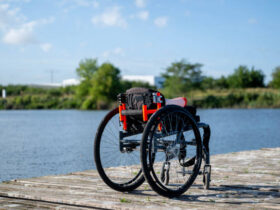Spinal decompression therapy is a non-invasive treatment designed to relieve back pain and other problems associated with spinal disc issues. The therapy aims to stretch the spine, creating negative pressure within the discs, promoting the movement of water, oxygen, and nutrient-rich fluids into the discs so they can heal. This therapy is crucial for spine wellness, a significant component of overall health, as the spine plays a vital role in bodily functions and mobility.
Back decompression is increasingly relevant in modern health due to sedentary lifestyles and high rates of spinal issues. This article delves into the breakthrough of spinal decompression therapy, covering everything you need to know for a healthier spine.
Types and Categories
Non-Surgical Spinal Decompression
Non-surgical spinal decompression involves the use of a traction table or similar motorized device to stretch the spine gently. Techniques include:
- Mechanical Decompression: This uses a specialized table that stretches the spine.
- Manual Traction: Performed by physical therapists who manually apply force to stretch the spine.
Surgical Spinal Decompression
When non-surgical methods fail, surgical options are considered. These include:
- Microdiscectomy: Removal of a portion of a herniated disc to relieve pressure on nerves.
- Laminectomy: Removal of part of the vertebra to create more space for the spinal cord.
- Spinal Fusion: Fusion of two or more vertebrae to eliminate motion and reduce pain.
Manual Spinal Decompression
Chiropractors and physical therapists often employ manual decompression techniques. These include:
- Chiropractic Adjustments: Realignment of the spine to reduce pressure.
- Physical Therapy: Exercises and manual techniques to relieve back pain.
Symptoms and Signs
Common Symptoms Indicating a Need for Decompression
- Chronic Back Pain: Persistent pain in the back that doesn’t respond to standard treatments.
- Sciatica: Pain that radiates from the lower back down the legs, often due to a herniated disc.
- Herniated Discs: Bulging discs that cause pain and discomfort.
Uncommon Symptoms
- Numbness and Tingling: Sensations in the extremities, indicating nerve compression.
- Weakness in Legs: Difficulty in movement or strength, a severe symptom needing immediate attention.
Causes and Risk Factors
Biological Factors
- Age-Related Degeneration: Wear and tear on the spine that comes with aging, leading to conditions like osteoarthritis and disc degeneration.
Environmental Factors
- Occupational Hazards: Jobs that involve heavy lifting, repetitive motions, or prolonged sitting increase the risk of spinal issues.
Lifestyle Factors
- Poor Posture: Slouching and improper seating habits contribute significantly to back problems.
- Lack of Exercise: Inactivity leads to weak muscles, which support the spine poorly.
Diagnosis and Tests
Physical Examination
An initial patient assessment involves a detailed medical history and physical examination to identify pain points and potential causes.
Imaging Tests
- MRI: Provides detailed images of the spinal discs and nerves.
- CT Scans: Offers a comprehensive view of the spinal structure.
- X-Rays: Useful for identifying bone abnormalities.
Neurological Tests
- Nerve Conduction Studies: Measures the speed and strength of electrical signals in the nerves to detect any abnormalities.
Treatment Options
Non-Surgical Treatments
- Physical Therapy: Tailored exercises to strengthen the muscles supporting the spine.
- Chiropractic Care: Spinal adjustments to alleviate pressure and pain.
- Spinal Decompression Devices: Mechanical devices that gently stretch the spine.
Surgical Treatments
- Microdiscectomy: Effective for herniated discs causing nerve compression.
- Laminectomy: Relieves pressure on the spinal cord by removing part of the vertebra.
- Spinal Fusion: Stabilizes the spine by fusing vertebrae together.
Alternative Treatments
- Acupuncture: Can help reduce pain and improve function.
- Yoga and Pilates: Exercises that enhance flexibility and strength, supporting spinal health.
Preventive Measures
- Maintaining Good Posture: Ensuring the spine is properly aligned during daily activities.
- Regular Exercise and Stretching: Keeping muscles strong and flexible to support the spine.
- Ergonomic Adjustments at Work: Using supportive chairs and desks to reduce strain.
- Healthy Weight Management: Reducing the burden on the spine by maintaining a healthy weight.
Personal Stories or Case Studies
Case Study 1: Successful Non-Surgical Decompression
A middle-aged woman suffering from chronic back pain found relief through a combination of physical therapy and mechanical decompression. Her symptoms improved significantly without the need for surgery.
Case Study 2: Recovery After Spinal Surgery
A young man with severe sciatica underwent a microdiscectomy. Post-surgery, he engaged in physical therapy, regaining full function and returning to his active lifestyle.
Case Study 3: Lifestyle Changes Preventing Spinal Issues
A corporate employee adopted ergonomic practices and regular exercise, preventing the onset of serious back problems despite a sedentary job.
Expert Insights
Interview with a Chiropractor
Dr. Jane Smith emphasizes the importance of regular chiropractic care and lifestyle modifications to maintain spinal health and prevent issues.
Quotes from Orthopedic Surgeons
Dr. John Doe highlights the advancements in minimally invasive spinal surgeries, offering effective solutions with shorter recovery times.
Insights from Physical Therapists
Therapist Mary Johnson discusses the benefits of physical therapy in managing and preventing back pain through targeted exercises and education.
Conclusion
Maintaining a healthy spine is crucial for overall well-being. Spinal decompression therapy, both non-surgical and surgical, offers effective solutions for those suffering from chronic back pain and other spinal issues. By understanding the various treatment options, preventive measures, and seeking professional guidance, individuals can take proactive steps towards a healthier spine.














